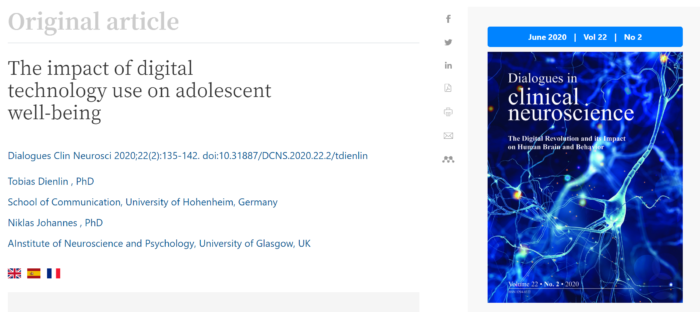
Niklas Johannes and I have recently published a meta-review on the “impact of digital technology use on adolescent well-being” in a special issue of the journal Dialogues in Clinical Neuroscience.
In the paper, we shortly discuss what well-being is, what types of digital tech use exist, and how we can understand the particular psychological context of adolescents. We then examine the literature and provide some tentative conclusions regarding the effect of digital tech on adolescent well-being.
Although there are several conflicting positions and research findings, the following six general implications emerge:
1. The general effects of digital technology use on well-being are likely in the negative spectrum, but very small—potentially too small to matter.
2. No screen time is created equal; different uses will lead to different effects.
3. Digital technology use is more likely to affect short-term positive or negative affect than long-term life satisfaction.
4. The dose makes the poison; it appears that both low and excessive use are related to decreased well-being, whereas moderate use is related to increased well-being.
5. Adolescents are likely more vulnerable to effects of digital technology use on well-being, but it is important not to patronize adolescents—effects are comparable and adolescents not powerless.
6. The current empirical research has several limitations: high-quality studies with large-scale samples, objective measures of digital technology use, and experience sampling of well-being are still missing.
The paper is open access and can be read or downloaded for free here.